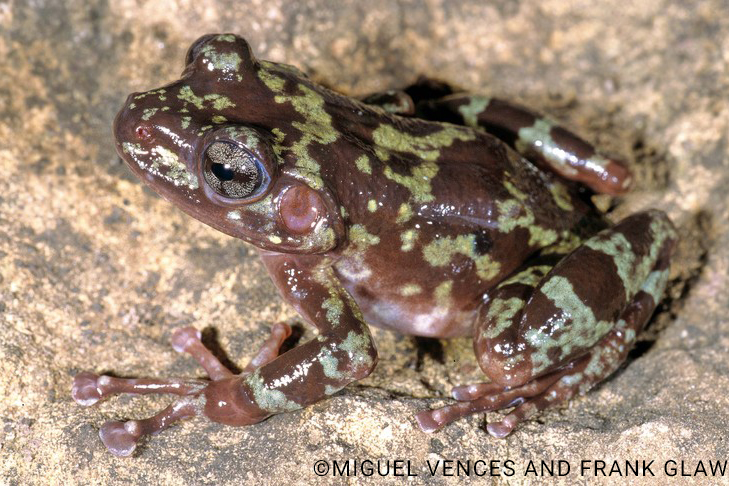About
Tsingymantis antitra is the sole species in Tsingymantis, meaning this is a monotypic genus.
This species is part of the Mantellidae frog family, which diverged from all other amphibian lineages about 50 million years ago, which makes them as dissimilar from their closest relatives as porcupines are from chinchillas. This family is estimated to have colonized the island of Madagascar 76–87 million years ago. This species is endemic to the Ankarana Special Reserve in Madagascar and it has been found around the “Petit Tsingy”, Campement Anilotra and close the Campement d’Andrafiabe. A major threat to this species is continued habitat degradation due to the collection of firewood, timber, the grazing of livestock and sapphire mining. Despite this species occurring in the Ankarana National park, which is protected, improved management is required. This species also has special status in Malagasy biodiversity.
- Order: Anura
- Family: Mantellidae
- Population: Rare
- Trend: unknown
- Size: 54-64mm
EDGE Score
Distribution
This species is only known from the Ankarana Special Reserve in northern Madagascar, between 50-117 metres above sea level.
Habitat and Ecology
This species lives in leaf litter and all specimens have been found at night in association with the tsingy limestone formations, either along a small brook or near dry riverbeds. Tadpoles and newly metamorphed juveniles of this species were observed in small rock pools.
